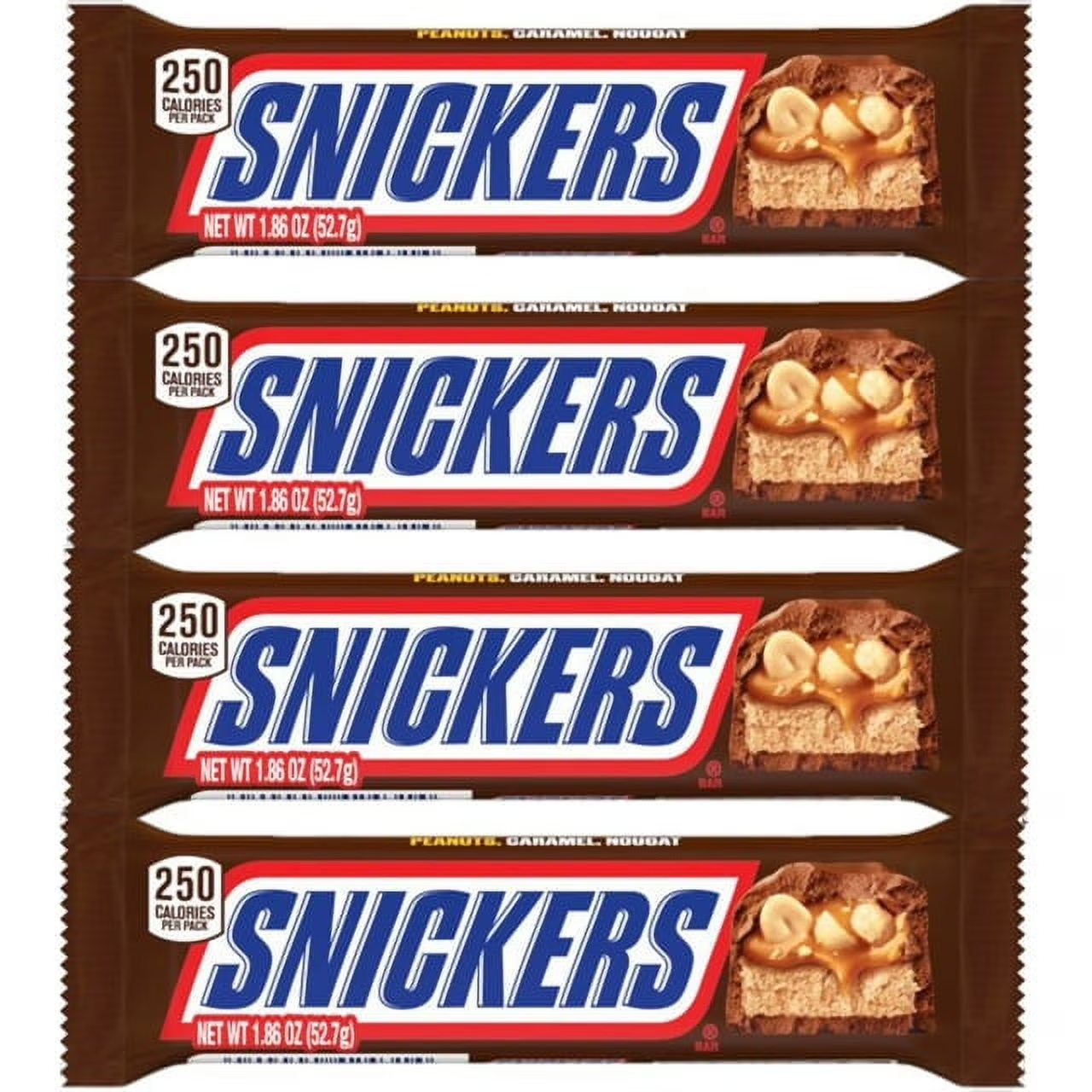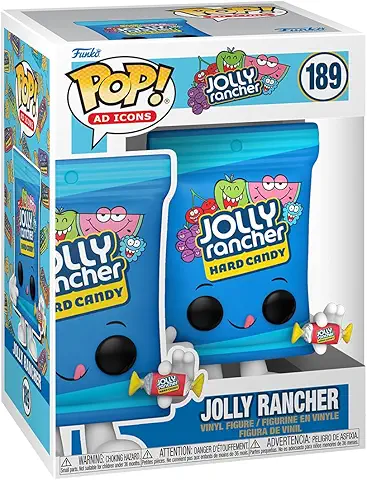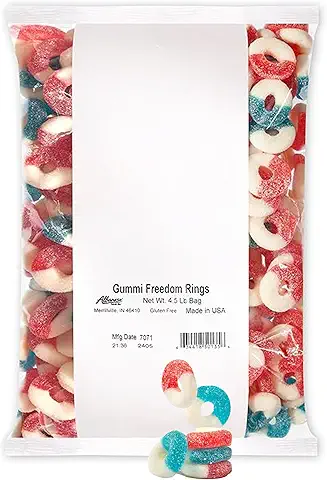Description
Buy Snickers Chocolate The Snickers bar is one of those iconic treats that seems to be everywhere. Manufactured by Mars, Incorporated, it has become a staple in the confectionery world. Introduced in 1930, Snickers Chocolate has since grown into a truly global product with countless regional variations and packaging formats.
In this article, we’ll take an in-depth look at Snickers: its history, specifications (ingredients, nutritional values, variants), its benefits (and limitations) worldwide, market reach, and what makes it relevant in various regions — including Africa and markets like yours in Cameroon. The aim is to provide an SEO-friendly, comprehensive piece that covers all key aspects.
1. A Brief History
Buy Snickers Chocolate was launched by Mars in the United States in 1930. The name reportedly comes from the Mars family’s favorite horse, “Snickers.” Over the decades the bar evolved into the familiar form: nougat layer topped with caramel and roasted peanuts, all enrobed in milk chocolate.
The brand’s marketing grew through memorable campaigns such as the slogan “You’re not you when you’re hungry,” which emphasized its role as a hunger-buster snack. Globally, Snickers has expanded into many size formats, regional flavor variants, and even health-positioned sub-brands (e.g., protein versions).
Understanding its history is important because it helps frame why its specifications and benefits matter — as both a familiar treat and a global snack product.
2. Product Specifications Buy Snickers Chocolate
When we talk about specifications, we refer to ingredients, nutritional values, packaging sizes, variants, allergens, and regional differences.
2.1 Ingredients & Composition
Here is a typical ingredient list for the standard Snickers bar:
-
Milk chocolate (sugar, cocoa butter, chocolate, skim milk, lactose, milkfat, soy lecithin)
-
Peanuts (roasted)
-
Corn syrup / glucose syrup
-
Sugar
-
Palm oil / vegetable fat
-
Skimmed milk powder / whey protein
-
Salt
-
Egg whites
-
Artificial flavor / vanilla extract
-
Emulsifier (soy lecithin)
Regional variants may include different vegetable fats or slightly altered formulations (for cost, climate, packaging, or local regulation reasons). For instance, one UK listing states: “Milk chocolate (35 %) with soft nougat (14 %) and caramel center (28 %) with peanuts (22 %).”
2.2 Nutritional & Allergen Information Buy Snickers Chocolate
Here are sample values for a standard bar:
-
In the U.S., a full-size Snickers bar (serving = 1 bar) provides: 250 calories; 12 g fat (of which 4.5 g saturated); sodium 125 mg; total carbohydrate 32 g; sugars 28 g; protein 4 g.
-
In the UK, for a 48 g bar: 248 kcal; fat 13 g; saturated fat 4.6 g; carbohydrate 26 g; sugars 22 g; protein 4.6 g; salt 0.22 g.
Allergens: Peanuts, milk, eggs, soy are commonly present; may contain tree nuts in some production lines.
2.3 Packaging Sizes, Formats & Variants
Some of the common size formats and variants include:
-
Singles / full-size bars (~50 g or so depending on market)
-
Share size bags / multipacks (for instance 11.16 oz bag in the U.S.)
-
Bulk / catering (e.g., 24 × 50 g bars)
-
International variations: Crisp or Fruit & Nut versions, protein versions (e.g., “Snickers Protein” with reduced sugar and higher protein)
2.4 Regional Differences
Because of different manufacturing plants, ingredient sourcing, and local regulations, some markets may have slightly different nutrition or ingredient lists. For example:
-
In Finland/Poland markets: per 100 g ~481 kcal, fat ~22.5 g, sat ~7.9 g, carbs ~60.5 g, sugars ~51.8 g.
-
The UK variant lists milk chocolate part as 35 %, nougat 14 %, caramel 28 %, peanuts 22 %.
Therefore, when buying a bar in Cameroon or elsewhere, always check the local label for exact values.
3. Worldwide Benefits & Uses of Buy Snickers Chocolate
Although Buy Snickers Chocolate is fundamentally a confectionery treat (and thus should be consumed in moderation), it does offer some practical benefits — especially in certain contexts — and carries global appeal. Let’s explore what you might view as “benefits” of Snickers, along with caveats.
3.1 A Quick Energy Boost
The combination of carbohydrates (sugars), fats (from peanuts and chocolate), and some protein means Snickers can act as a quick energy snack. The sugars provide immediate energy, while the fats and peanuts slow digestion slightly, sustaining that energy a bit longer than pure sugar alone. Some sources describe the fats as “long-lasting fuel.”
In contexts where someone needs a fast snack (e.g., on a trip, between meals, after a physical activity) Snickers can “fill the gap” of hunger or low energy. In fact, the original marketing tagline “You’re not you when you’re hungry” emphasizes it filling hunger.
3.2 Global Availability & Familiarity
One of the benefits of Snickers is that it is widely available globally — meaning that in many countries you know what you’re buying. For travellers, that’s helpful. Its global supply chain and brand recognition mean you can often find it in supermarkets, convenience stores, vending machines.
In African countries like Cameroon (Yaoundé), while there may be local pricing and import costs, the availability of global brand snacks like Snickers means access to familiar snacks in an internationalized food environment. The benefit: reliability and trust.
3.3 Versatility in Snacking Situations
-
It can be consumed as a treat or reward.
-
It may be used in dessert or snack recipes (e.g., chopped Snickers in ice cream or as topping).
-
It can be part of “emergency food” when one needs something to hold one over until the next meal.
3.4 Psychological / Emotional Benefit
The familiarity of the product, the pleasurable taste (chocolate + caramel + peanuts) and the brand’s positioning give it an emotional comfort and hedonic benefit. That is, it’s not just about nutrients — about enjoyment. From a marketing perspective, Snickers has been successful because it ties the treat to hunger, mood, identity and fun.
4. Considerations & Caveats (Responsible Consumption)
While we’ve described benefits, it’s equally important to be realistic:
-
High in sugar: Many varieties contain 20–30 g of added sugar in a bar serving. For example, the U.S version contains 28 g sugars.
-
Moderate-to-high in fat: While peanuts provide healthy monounsaturated fats, the added vegetable fats and chocolate add saturated fat; e.g., 4.5 g saturated fat per U.S bar.
-
Calorically dense: At ~250 kcal for a standard bar, it may not be suitable if one is strictly monitoring calorie intake.
-
Allergens: Peanuts, milk, eggs, soy are common; cross-contamination possible.
-
Not a substitute for real meals or balanced nutrition: While it can “hold hunger” temporarily, it doesn’t replace fiber-rich whole-foods, fruits, vegetables, whole grains.
Hence, Snickers is best enjoyed as part of a balanced diet, rather than as a “health bar”.
5. Snickers Around the World: Local Market Insights
Let’s look at some specifics of how Snickers appears and is marketed globally, including in emerging markets like Africa.
5.1 Global Market Reach
Snickers is sold in many countries worldwide, adapted to local tastes via size, packaging, and occasional flavor variants. For example:
-
In the UK: 48 g bar with ~248 kcal.
-
In Finland/Poland: 100 g values show ~481 kcal.
-
In Africa: though specific Cameroonian data isn’t in our search results, we can infer that imported snack bars such as Snickers rely on distribution, import duties, local market pricing and are available at supermarkets, kiosks.
5.2 Regional Flavors and Variants
To appeal to local tastes, Snickers has released variants: fruit & nut, crisp (with rice crunch), protein, seasonal shapes (Halloween pumpkins, Christmas trees) etc. These localized variants may or may not reach every market; some are exclusive to select countries.
5.3 Pricing and Accessibility in Developing Markets
In markets like Cameroon, imported confectionery like Snickers may carry a premium due to import costs, taxes, distribution logistics, currency fluctuations. That can affect affordability and accessibility. However, its global brand prestige may command higher perceived value.
5.4 Marketing & Cultural Relevance
Snickers’ marketing emphasizes hunger satisfaction, personality change when hungry, and fun. These universal themes help it appeal across cultural contexts. For instance, the campaign “You’re not you when you’re hungry” has been adapted in multiple markets. The brand has cultural resonance, making it a snack with both functional (energy/hunger relief) and symbolic (treat, fun) value.
6. Snickers’ Benefits for Consumers in Cameroon & Similar Markets
Focusing on your context in Yaoundé, Cameroon (and similar markets in Africa), what specific benefits does Snickers offer?
6.1 Reliable Energy Snack in Busy Lives
In urban settings where people may have fast-moving schedules, commuting, working long hours, Snickers can provide a quick snack option between meals. The carbohydrate + fat + peanut combination means it can hold one over until a proper meal.
6.2 Familiar Global Brand in Local Setting
Having a globally-recognized brand like Snickers offers trust: consistent taste, consistent quality. For consumers who travel or who have been exposed to global food culture, buying Snickers means getting what you expect.
6.3 Versatility in Use
In local convenience stores, kiosks, supermarkets — Snickers can serve as impulse purchase, reward, travel snack. It can also be used in local recipes (e.g., chopped Snickers into local desserts or ice creams) to give a fusion of international and local tastes.
6.4 Premium Appeal & Gift/Sharing Option
Due to its global brand status, Snickers may be used as a premium snack, for sharing among friends, or as a small gift. In markets where local snack brands perhaps dominate, imported global bars may carry a sense of special-treat status.
7. Why Snickers Continues to Succeed
What are the key drivers behind Snickers’ global success?
7.1 Balanced Taste Profile
The combination of roasted peanuts (crunchy), soft caramel, chewy nougat, and milk chocolate hits multiple sensory notes. The texture interplay (crunch + chew + smooth) makes it memorable, as many fans comment on. For example, one Reddit user noted:
“It’s nougat topped with caramel and peanuts, and all encased in milk chocolate.” Reddit
7.2 Strong Brand Identity
Snickers has a consistent brand message around satisfying hunger, fun, humor. That helps it stand out in the crowded confectionery market. The fact that people globally recognize the name “Snickers” creates strong brand equity.
7.3 Global Manufacturing & Distribution
With Mars’ global supply chain, Snickers is produced, distributed, and marketed in many regions with adaptions for size and packaging. This gives cost-efficiency and broad availability.
7.4 Adaptability & Innovation
Snickers doesn’t stick to one format only. It has expanded into variants (Protein, Crisp, Fruit & Nut), seasonal shapes, regional flavors. This adaptability keeps the brand fresh. For example, “Snickers Protein” has fewer sugars and more protein in some markets.
7.5 Localization
While the core remains the same, local packaging sizes, price points, and flavor variants allow Snickers to tailor for local markets. For example, in the UK the 48 g bar has specific nutritional values; in other markets different sizes and compositions exist.
8. Potential Challenges & Global Considerations
Even global successes have challenges:
-
Health & nutrition trends: As consumers grow more health-aware, snacks high in sugar/fat face scrutiny. The emergence of “protein bars” and low-sugar snacks means Snickers must adapt.
-
Price sensitivity: In developing markets, premium imported brands may struggle if local consumers opt for cheaper local alternatives.
-
Supply chain and cost: Import tariffs, logistical costs, currency fluctuations can affect availability & price in countries like Cameroon.
-
Allergen risk & regulatory compliance: Peanuts, soy, milk, egg allergens require clear labelling; local regulations may differ.
9. Practical Advice For Consumers & Retailers
For Consumers
-
Check the label: Because ingredients and nutritional values can vary by region, always check what you purchase locally.
-
Moderation is key: Use it as a treat or snack rather than meal replacement.
-
Storage matters: Chocolate melts easily in warm climates; store in cool/dry place away from direct sunlight.
-
Incorporation into diet: If you’re using it as a snack between meals, combine with a glass of water or a piece of fruit to moderate sugar spike.
-
Allergy awareness: If you have peanut, soy, milk or egg allergies, be cautious.
For Retailers (in Cameroon or similar markets)
-
Prominent display: Place near checkout or in snacking aisle – global brand appeal helps drive impulse purchases.
-
Promotions / bundles: Offer multipacks or seasonal variants to encourage larger purchases.
-
Highlight global branding: Use signage to emphasize “International brand – same great taste worldwide”.
-
Monitor pricing: Imported items may carry higher cost; ensure margin pricing allows competitiveness but reflects perceived premium.
10. Looking Ahead: Trends & What’s Next
As consumer tastes evolve worldwide, what might this mean for Snickers and similar products?
-
Health-conscious variants: More low-sugar, higher-protein, plant-based chocolate bars may emerge; Snickers already has some moves in that space.
-
Sustainable sourcing & packaging: Cocoa sourcing, palm oil sustainability, reducing packaging waste are major global trends; brands like Snickers will likely increase transparency.
-
Local flavor innovations: For markets like Africa, there may be region-specific flavors (e.g., local nuts, spices) to expand appeal.
-
Digital/online sales & snack delivery: In urban centers, snack bars are being bought online; for Cameroon, mobile commerce growth could benefit snack bar sales.
-
Premium snack segments: While Buy Snickers Chocolate is mainstream, there is room for up-market “luxury” versions (dark chocolate, artisanal nuts) to diversify.
11. Summary & Final Thoughts
In summary:
-
Snickers remains a globally recognized, highly successful chocolate-nut-caramel bar with broad market reach.
-
Its specifications (ingredients, nutrition, variants) show that it is a convenient, satisfying snack rather than a health food.
-
Its benefits — a quick energy boost, global brand trust, versatility as snack/treat — make it relevant worldwide, including markets like.
-
At the same time, responsible consumption, price sensitivity, and local adaptation are important considerations.
-
The brand’s future looks promising if it continues innovation (health-oriented variants, sustainability, localization) in response to global consumer trends.
For you in , Snickers offers a piece of global snack culture — familiar taste, accessible format, and recognized brand value. Whether you pick it up for a quick hunger fix, as a treat, or for sharing, knowing its makeup and how to place it in your diet can help you enjoy it smartly.






Reviews
There are no reviews yet.